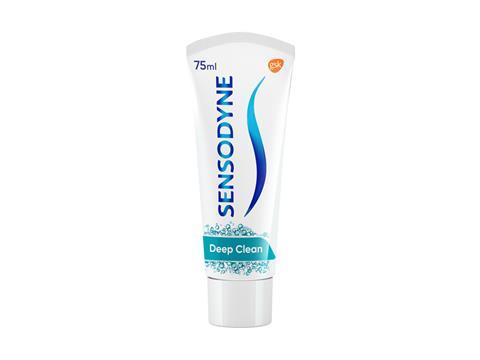
Last November, GSK set new science-based sustainability goals focusing on two key areas – climate and nature. It committed to a net zero impact on climate and a net positive impact on nature by 2030.
In this interview, which was originally published on CEFLEX’s website, CEFLEX sits down with Mike Allen, sustainability lead for GSK Consumer Healthcare Supply Chain (CHSC), to discuss how design for a circular economy for flexible packaging fits into the company’s goals.
Tell us about your role at GSK. What led you to joining the company and what are the most interesting and exciting parts of your job?
I am passionate about sustainability and have been for over 20 years. As well as being the sustainability lead for GSK CHSC, I was one of the founding members of the GSK CH sustainability team, which developed the GSK sustainability strategy. I am involved in delivering our plastics ambition and driving our supply chain to net zero carbon for Scope 1 & 2 emissions. A very exciting part of my role involves developing circular supply chains that incorporate the safe recycling of healthcare products and packaging.
I joined GSK 20 years ago as site director of the drinks factory where Ribena and Lucozade were manufactured, before we sold them to Suntory a few years ago. GSK is an amazing company to work for and I have been able to lead many incredible projects including completely redesigning and rebuilding our end-to-end supply chain for drinks – this resulted in our business doubling in just three years. During that time, I also acquired a contract manufacturer to enable a complete transformation of our Sensodyne and Aquafresh supply chains.
Can you tell us about any projects you're working on which relate to our theme: design of flexible packaging for a circular economy?
Our consumer healthcare business is working hard to ensure all our plastic packaging is recyclable where quality and safety permit.
Across our flexibles portfolio, our R&D teams are developing recyclable solutions. For example, we are in the process of converting our tubes portfolio – over 1bn tubes by 2025, in fact – to aluminium-free recyclable PBL (plastic barrier laminate), working in partnership with Albea and EPL Global. The first launch will take place this July across our Pronamel brand in Europe, followed by the global rollout across all brands, including Sensodyne and Aquafresh.

What advice can you give to CEFLEX stakeholders to really 'move the needle' and help create a circular economy for flexible packaging?
CEFLEX has created the flexibles design guidelines for polyolefin films, so step one in moving the needle is to use these guidelines to create a mono-material stream. The other critical element is to improve waste capture and recycling capabilities for flexibles, so they are recycled both in practice and at scale.
Additionally, we are working with a range of companies, partners and stakeholders such as the Ellen MacArthur Foundation, the Consumer Goods Forum, More Recycling, and CEFLEX, to implement impactful, circular measures. Such multi-stakeholder collaborations will help make circularity the norm in the industry.
As a provider of medications that often come in blister packs, what avenues are you exploring to make those blister packs recyclable? As they comprise multiple materials, this must be an area where you have many challenges.
Blisters are a challenge due to the barrier requirements to keep the medicine inside safe for consumer use, over the shelf life of the product. We have a number of exciting projects underway looking at the future of blisters; our R&D teams are working in close collaboration with our strategic suppliers and machine manufacturers.
What are your thoughts on EPR to deliver circularity for flexible packaging?
As a global healthcare company, we want to play our part in protecting and restoring the planet’s health, in order to protect and improve people’s health. We therefore welcome all efforts to achieve this, whether through promoting circularity or via public policy designed to treat and better manage the disposal of post-consumer products.
GSK CH is supportive of EPR when it’s levied to invest in improving waste capture and recycling. It can help us to move towards a circular economy by encouraging a harmonised approach and avoiding duplicating efforts across countries.
How have you and suppliers/customers used the CEFLEX design guidelines?
We have consulted the guidelines during our R&D into recyclable flexibles, and many of our direct and indirect suppliers are also members of CEFLEX. The guidelines will enable a total supply chain approach to designing for a circular economy.
How far along is Europe in achieving a circular economy for flexible packaging?
I think it’s important to recognise how far we have come in such a short space of time – industry is making good progress. It is firmly on the political agenda, with circular policies being introduced by national governments and the European Union, for example. But a lot more needs to be done. Design guidelines are available and increasingly, flexible packaging is being designed for recycling. The next big challenge is to ensure flexibles can be collected and sorted in practice, at scale, and in a way that is commercially viable.
















